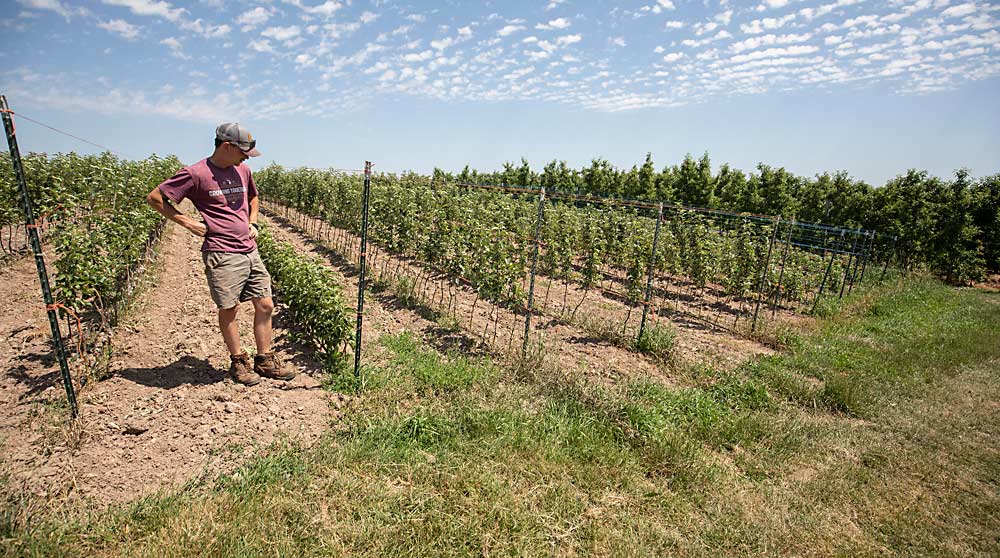
Seeking a cheaper and more ready supply of the trees they want, more apple growers in the East and Midwest are establishing their own on-farm nurseries. The arrangement may save money, but the trade-off is higher risk and more intensive management.
Good Fruit Grower interviewed Michigan and New York growers who started growing their own nursery trees in the past several years, and one who has done it for decades. They all order rootstocks from West Coast nurseries, then bench graft or chip bud them, usually attaching Honeycrisp, Gala or Fuji scions. The growers admitted their trees don’t perform quite as well as trees from commercial nurseries, but they say they come close enough.
The growers said on-farm nurseries spread out establishment costs and are cheaper overall than commercial trees, but they require investing in specialized equipment and providing a lot of care and attention in order to succeed.
“The nursery has to be your priority,” said New York grower Scott Partyka. “If it’s not, you’re wasting your time.”
Partyka and Sons Farms in Kendall, New York, planted its first on-farm nursery trees in 2016 and has close to 6,000 nursery trees now, he said.
The Partyka family grows about 1,000 acres of grain, vegetable and fruit crops, including 80 acres of apples. They needed more fresh varieties, and their processing trees were getting old, but Partyka said that spending $80,000 on new trees just wasn’t in the cards.
An on-farm nursery was cheaper, and Partyka relished the challenge of growing his own trees. He also liked having an extra year to decide which varieties to bud. Partyka orders mostly Budagovsky 9 rootstocks for his nursery, with more vigorous roots for his processing Taylor Romes. He had to build or retrofit much of his own equipment to manage the nursery, including his own planter, tree digger and weed sprayer.
Experience and adaptation
Nesbitt Fruit Farms in Waterport, New York, has been growing its own nursery trees for about 25 years. About 10 years ago, the Nesbitts started using the “grow-through” system touted by New York growers and researchers — leaving trees in the nursery an extra year to get them taller and more orchard-ready. The bigger trees fill space faster and crop earlier than the 1-year-old whips they used to transplant from nursery to orchard, said grower Shane Nesbitt.
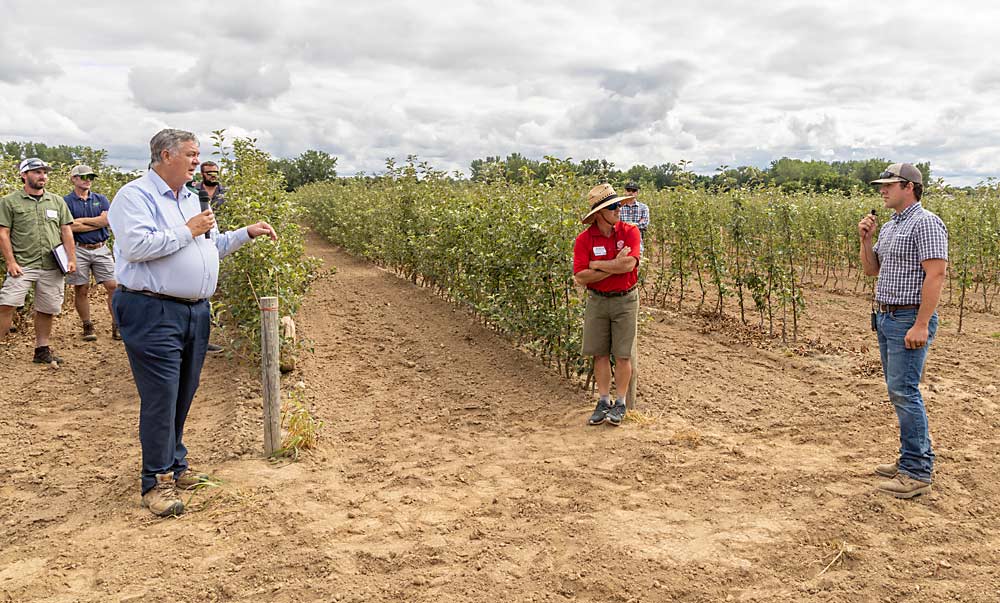
One drawback to the grow-through method: some transplant shock in the first year or two in the orchard. But that’s not necessarily a bad thing with more vigorous varieties, he said.
For growers considering on-farm nurseries, Nesbitt advised starting small and working through the growing pains.
“Timing is everything with a nursery,” he said. “You miss a weed spray, the tree can be engulfed in weeds. You miss a copper spray, you can get fire blight.”
The Nesbitts plant rootstocks in their nursery plots in spring (usually Bud.10, Geneva 935, G.969 and G.41). They bud the trees in August or September, then cut off the trees above the buds the following spring. During the following “grow-through” year, they raise the trees on a strict fertilizer, herbicide and copper program. Two years after budding, they transplant the trees to the orchard.
Their nursery plots supply about 40 acres of orchard trees per year for the farm that encompasses 700 acres of apples. Nesbitt said each on-farm nursery tree costs him between $4 and $5, compared to $8 to $12 per commercial tree.
Learning what it takes
At Windy Ridge Orchards in Conklin, Michigan, Kyle Rasch and his father, Chuck, planted an on-farm nursery in spring 2021. Their first transplants will be made this spring. They have about 19,000 nursery trees in the ground. So far, the trees are in good shape, Kyle said.
“We won’t outdo a professional nursery, but at the end of the day we get a nice tree,” he said.
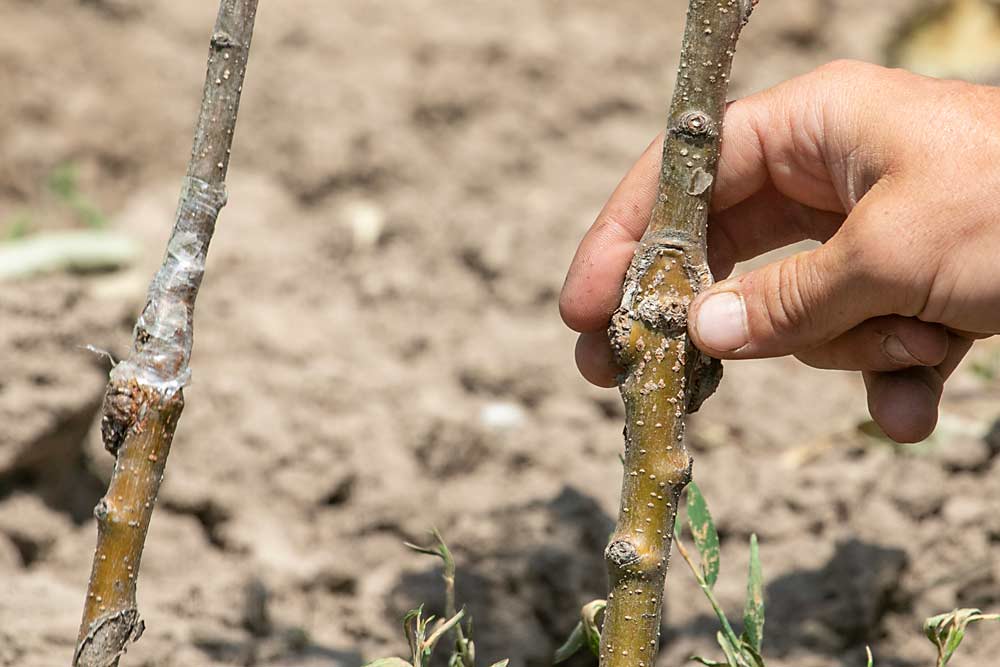
Chuck Rasch said Windy Ridge had an on-farm nursery about four decades ago. They grew nice trees, but raising them required a lot of diligence, and they eventually decided to go back to ordering commercial trees.
With tree costs rising in the past few years, Kyle thought an on-farm nursery was worth another try. Some of their H-2A workers know how to bench graft, which made the decision easier, he said.
Kyle and Chuck showed Good Fruit Grower one of their on-farm nursery plots in June — Gala on G.935. Most of the Galas are bench grafted, but some are chip budded because of a late rootstock order. They prefer bench grafting, which gives the trees a better start in Michigan’s shorter growing season, Kyle said. They plan to transplant the Galas this spring.
Growing their own trees might be cheaper, but it does present challenges.
“You see why the nurseries are charging what they do,” Kyle said. “It’s a lot of work.”
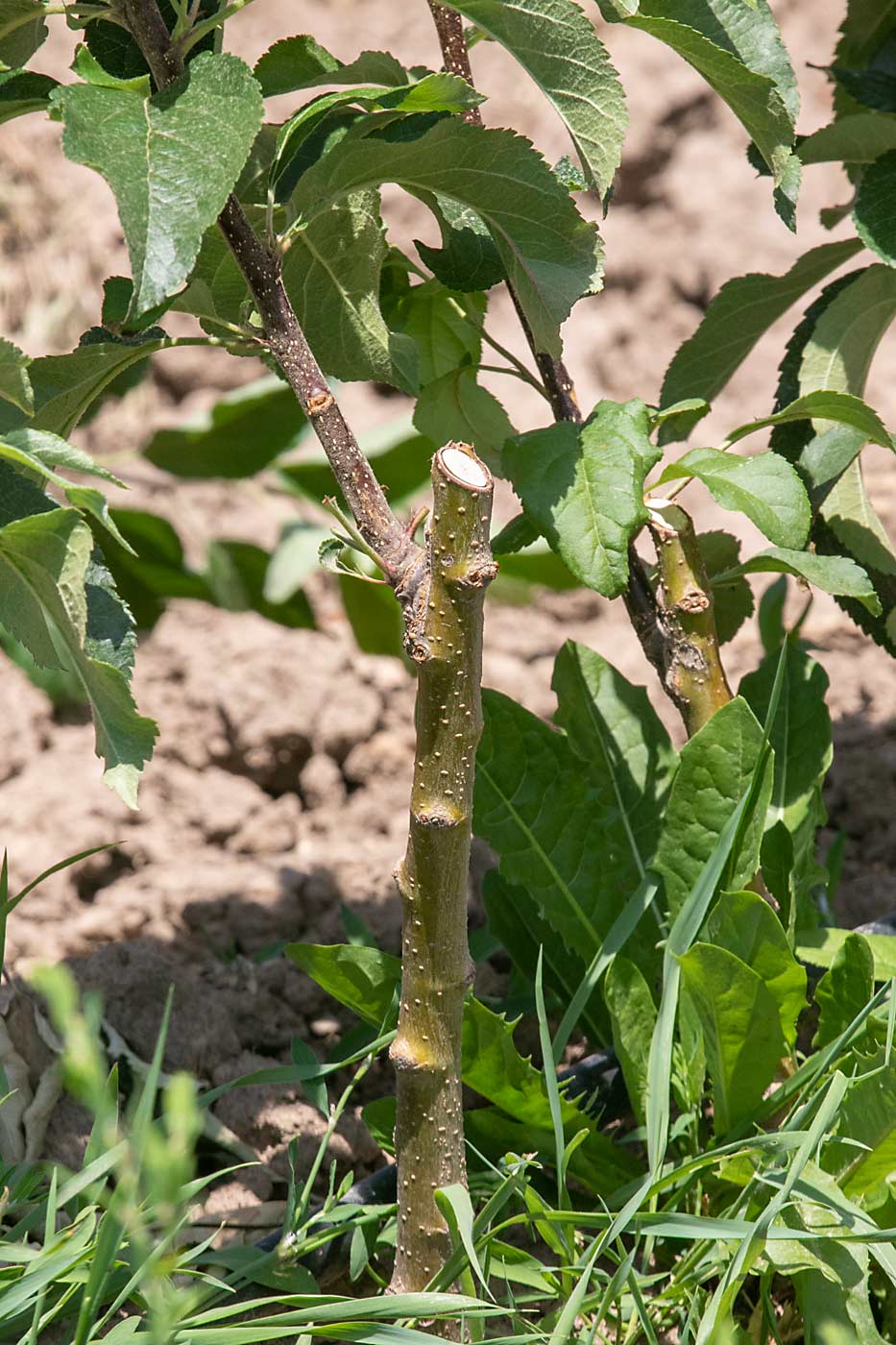
Not far from Windy Ridge, growers Randy Kober and Patrick Goodfellow decided to partner on an on-farm nursery near Sparta, Michigan. Each grower plants between 10,000 and 15,000 nursery trees per year. Some years the trees do well, some years they don’t, Kober said.
Kober prefers bench grafting. Chip budding is more work and results in a smaller tree. He makes the grafts in winter, stores the young trees in a cooler to give them time to heal, then plants them in spring. He keeps the trees in the nursery plot for two years before transplanting them to the orchard, he said.
Kober decided to grow his own trees to spread out costs, but if the price of commercial trees keeps going down like he expects it to, he might rethink the practice.
“If trees become more available, we might go back to buying them again,” he said. “I’ve heard my dad and grandpa say they tried (on-farm nurseries) in the past. People try it for a few years and then get out of it.”
—by Matt Milkovich

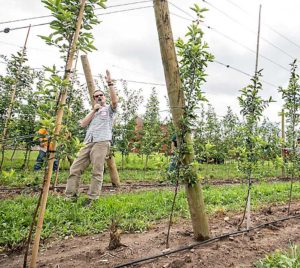
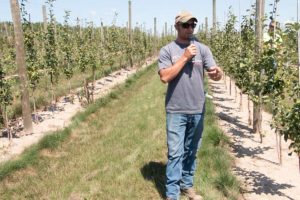





Leave A Comment